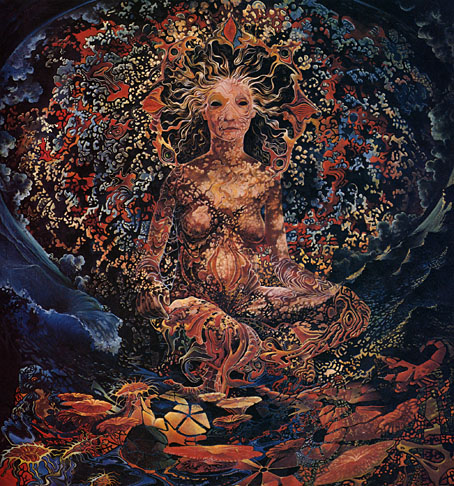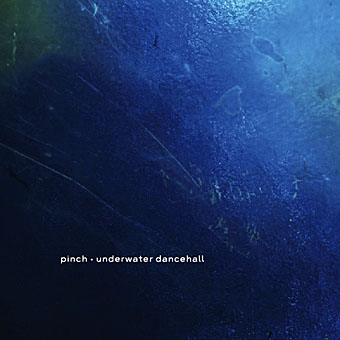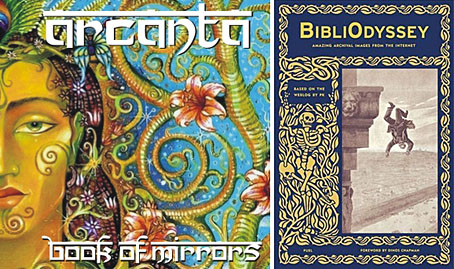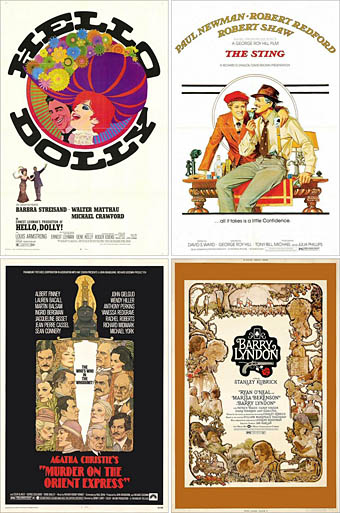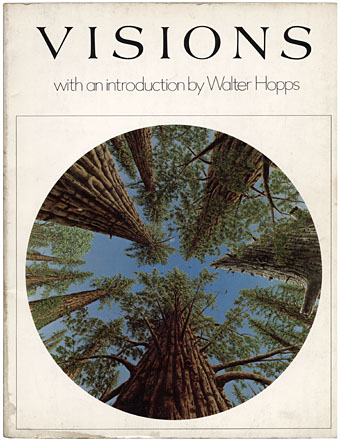
Cover painting: Holy Grove by Gage Taylor (1975).
Book purchase of the week was this American collection of what we have to call “hippy art” (or “California Visionary Art”, as its creators preferred) published by Pomegranate Publications in 1977. I’d seen this circa 1979 and many of the pictures inside were used by Omni Magazine to decorate the science fiction stories in their early issues. After that it vanished from view completely which leads me to believe that UK distributors Big O didn’t sell as many as they would have liked. The white cover design made me remember it for a long time as being part of the David Larkin series which I discussed in May but it isn’t, although the Larkin books were quite probably the model for the book’s presentation.
Finally acquiring a copy was something of a disappointment since it transpires I remembered the decent painters and forgot the terrible ones who comprise at least half the book. Cliff McReynolds is one of the better artists (Omni thought so too) and by coincidence I posted one of his Visions paintings, Landscape with Grenade, almost a year ago to the day.
BethAnn (1970).
Best of the bunch for me is Nick Hyde whose fantastically detailed works blend the fractal filigree of psychedelic art with the kind of dreamscapes and tableaux one sees in Surrealism. The print reproductions do little justice to his detail and the web degrades his work even further (see Abraxas for a good example). Happily there are posters available.
Elsewhere on { feuilleton }
• The fantastic art archive

